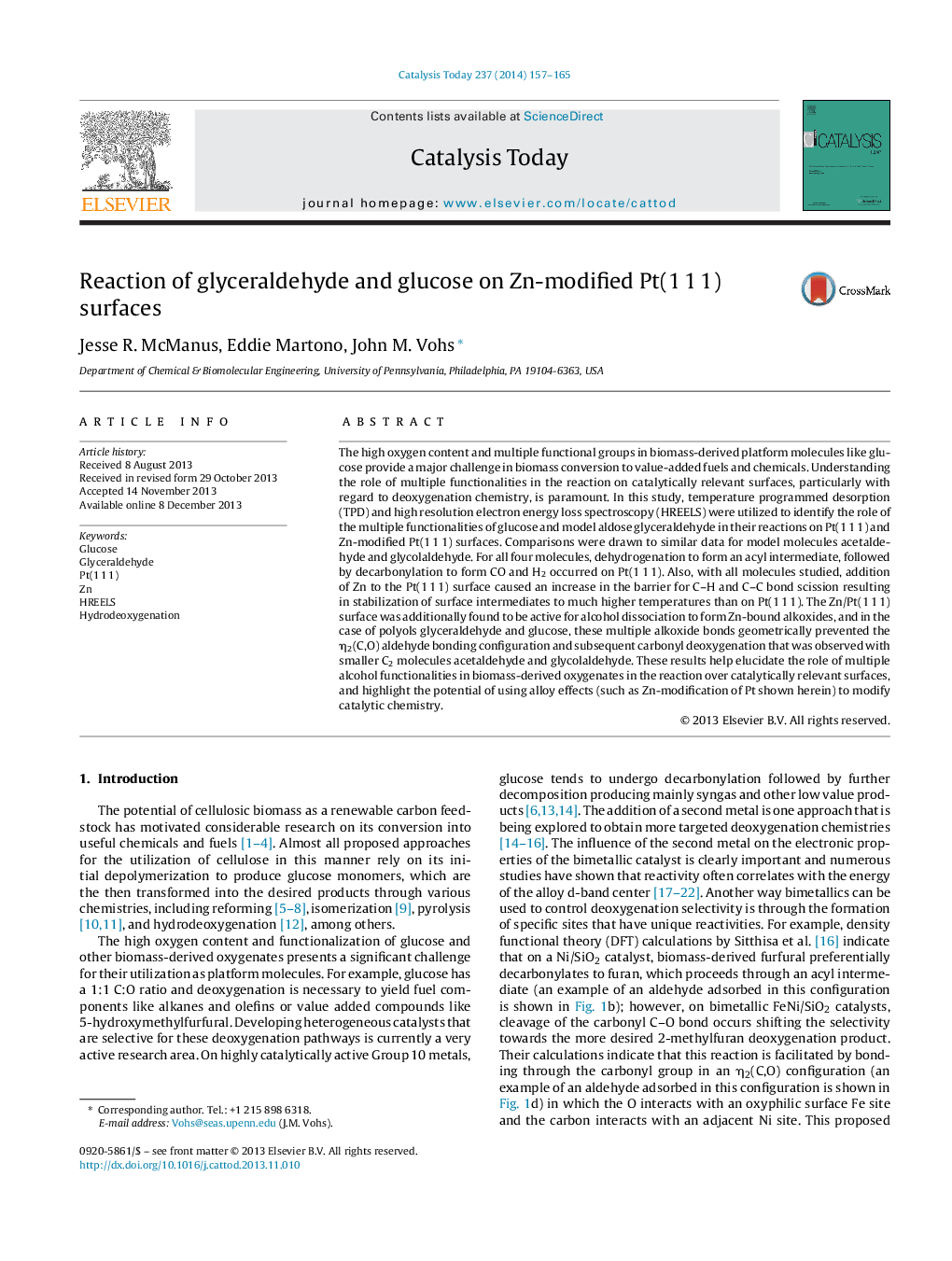| Article ID | Journal | Published Year | Pages | File Type |
|---|---|---|---|---|
| 53988 | Catalysis Today | 2014 | 9 Pages |
•TPD and HREELS were used to study the reaction of glyceraldehyde and glucose on Zn/Pt(1 1 1).•All aldoses studied undergo decarbonylation through an acyl on Pt(1 1 1).•Addition of Zn to the Pt(1 1 1) surface increased intermediate stability in all cases.•The mechanistic role of polyol function with respect to aldehydes was determined.•Alkoxide formation competes with aldehyde adsorption and deoxygenation.
The high oxygen content and multiple functional groups in biomass-derived platform molecules like glucose provide a major challenge in biomass conversion to value-added fuels and chemicals. Understanding the role of multiple functionalities in the reaction on catalytically relevant surfaces, particularly with regard to deoxygenation chemistry, is paramount. In this study, temperature programmed desorption (TPD) and high resolution electron energy loss spectroscopy (HREELS) were utilized to identify the role of the multiple functionalities of glucose and model aldose glyceraldehyde in their reactions on Pt(1 1 1) and Zn-modified Pt(1 1 1) surfaces. Comparisons were drawn to similar data for model molecules acetaldehyde and glycolaldehyde. For all four molecules, dehydrogenation to form an acyl intermediate, followed by decarbonylation to form CO and H2 occurred on Pt(1 1 1). Also, with all molecules studied, addition of Zn to the Pt(1 1 1) surface caused an increase in the barrier for C–H and C–C bond scission resulting in stabilization of surface intermediates to much higher temperatures than on Pt(1 1 1). The Zn/Pt(1 1 1) surface was additionally found to be active for alcohol dissociation to form Zn-bound alkoxides, and in the case of polyols glyceraldehyde and glucose, these multiple alkoxide bonds geometrically prevented the η2(C,O) aldehyde bonding configuration and subsequent carbonyl deoxygenation that was observed with smaller C2 molecules acetaldehyde and glycolaldehyde. These results help elucidate the role of multiple alcohol functionalities in biomass-derived oxygenates in the reaction over catalytically relevant surfaces, and highlight the potential of using alloy effects (such as Zn-modification of Pt shown herein) to modify catalytic chemistry.
Graphical abstractFigure optionsDownload full-size imageDownload high-quality image (174 K)Download as PowerPoint slide
